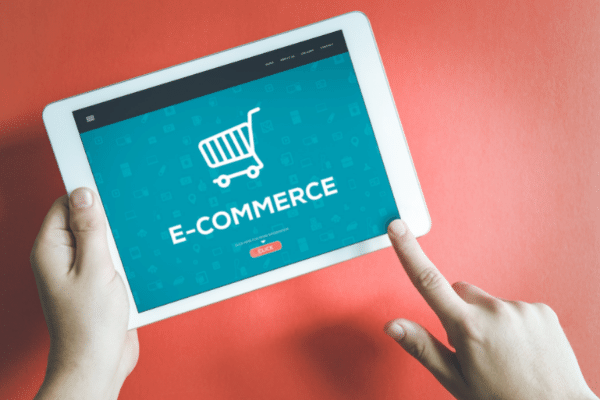Congratulations, your online store just launched. Let’s be honest – it’s not going to be easy, but building a digital business is a fun and exciting experience. It does not matter whether you are just starting or have been at it for years; the goal is the same – attract more customers, retain them and make more money.
As more people turn to the digital ecosystem to build sustainable businesses, there is a recycling of experiences that leaves you standing at the same point you started from. Additionally, the goal to be the next big thing means beating down increased competition, dynamic pricing, experimenting with countless SEO tools, integrations, marketing tips, and optimizations.

This has to be done without forgoing vital eCommerce statistics like cart abandonment at an average of 69.59%, 30% of online sales have been returned, and return policy – 76% of shoppers will buy if the return policy is easy. While these are some of the hundreds gathered as eCommerce evolved, store owners need to have the best eCommerce tips and tricks to boost their success rate online and offline, as the case may be.
Your online success is paramount, and after the pandemic, we have learned that the normal does not apply to the new. Additionally, the massive shift from brick and mortar stores to online means without the appropriate eCommerce tips, you might not be as successful as you’d like.
In this article, we will break down the different eCommerce sections. In addition, we will hand down exceptional tips that will reduce your mistakes, put you on track and enhance performance.
We recommend you familiarize yourself with these eCommerce tips.
Whether implementing them to boost the former strategies or starting fresh, be very clear about the path you want to take and follow them judiciously.
The eCommerce Economy

To fully comprehend the reasons for eCommerce tips, a better understanding of the platform is in order. eCommerce, as the name applies, is a transaction occurring via an electronic medium. That is buying and selling between customers, businesses, and others online. There are several types of eCommerce, but the most familiar is online buying and selling or online shopping.
Online shopping, also referred to as B2C (business to consumer) transaction, allows individuals can make purchases and payments via the internet. The second category is eCommerce interaction between businesses or B2B. This is seen when companies trade amongst themselves, such as seen between manufacturers, wholesalers, and retailers. For example, a company in China supplying footwear to an American brand who then sells to your local brick-and-mortar store.
The third eCommerce is between two consumers or C2C, as seen between two online stores and individuals trading on an online platform. All over the world, eCommerce has changed the face of business and how we choose to do it. The case is not different in the United States, with over 2.1 million retail stores online. While that sounds like a lot, it is still not neck-and-neck with the over 263 million shoppers that patronize them. eCommerce in the United States is growing exponentially, and the numbers are said to go from 431.6 billion US dollars in 2020 to a projected estimate of 563.4 billion in 2025.
Economists foresee growth revenue of over 735 billion US dollars 2023 – 2025 as more consumers rely on digital outlets to make supplies and fulfill needs.
Today stores like Amazon are changing the eCommerce scene by enhancing the retail relationship and how customers enjoy online shopping. Following behind are other eCommerce companies like Walmart, Target, Etsy, eBay, Shopify, etc. Together they make eCommerce a breeze in the USA or elsewhere.
As significant as online stores are to the growing population and consumer satisfaction, they represent a small portion of the market share. They must do everything within their powers to remain relevant or be eliminated by the newest kid on the block.
Furthermore, as online retail stores must gain relevance before the consumers, they must implement eCommerce tips on various levels to continually capture the interest and fulfill the market demands. A growing trend in the eCommerce market is SEO (Search Engine Optimization). It is the invisible motivational arm that keeps the dollars flowing and more people coming. However, there is more welded into these three letters SEO.
Talking of optimization, eCommerce will not be successful with mobile users. (Sometimes we wonder how it did in the beginning) but anyway, if you are looking for absolute success and expansion, M-commerce is an eCommerce tip or trick that must be included in your arsenal.
Now in case, you are wondering why this is important, the answer is simple. Like brick and mortar stores, there are strategies put in place that grew their businesses. The same applies to online stores, and we will look at those eCommerce tips one after the other in this article.
Are you starting out in the eCommerce waters or looking for a reliable support structure to help you boost your online store? Contact Ecomitize now for professional, efficient, and guaranteed strategies for eCommerce stores regardless of the type.
eCommerce SEO Tips

We cannot deny the importance of SEO in eCommerce. They are your visas to ranking and being relevant on the internet.
For eCommerce sites, the ability for search engines to effortlessly find you is a privilege to hold on to. However, there are factors to ensure it happens. While we go ahead and list out some eCommerce SEO tips that will help you optimize your site, do not rely on anyone’s product if you are looking for the best.
Let’s begin!
SEO Tip 1: Defining your keywords in details
The success of any eCommerce site is the keyword usage, making sure the keyword target the right channel and effectively defines the purpose is crucial if Google is to find you on their engine. When you focus on the wrong keyword, it will affect your business’ integrity, impressions, and conversion traffic to your website.
Your keyword research should play a fundamental role in listing your product category, identifying them, mapping, and placing them in your store. For decades SEO and keyword usage has been disconnected as many fail to use the appropriate keywords to draw in a demographic. There are three keyword categories to remember. They are:
Commercial keywords
These are keywords that trigger the intent to purchase a product or service. For example, buy snow boots, snow boots discounts, or snow boot sales will immediately connect to the consumer’s conscience to want to buy it.
Informational keyword
These are how-to keyword that attempts to educate the consumer about a product or service that your offer. For example,” how to strap on your snow boots”, snow boots caring tips, or snow boot repair tutorials are some. The intent is to teach the consumer hence an SEO strategy to lead and convert.
Navigational Keywords
These are keywords used with the intent of directing a consumer to the right products or brands. For example, XXX snow boot for optimal feet protection; XXX being the store and the rest explains itself.
Ecomitize eCommerce tips for success
➢ Use target keywords in the medium to high search volume to boost brand relevance and ranking: this means that you must link your products, with according to keywords consumer search for else your contents are relegated for misuse.
➢ You should focus on commercial keywords if your priority is ranking and triggering a purchase. They are the quickest way to build leads and conversion.
➢ Employ keyword research tools like Moz, Ahrefs, Google keyword planner, and SEMRush to boost your online store to the top and repeat the search at intervals to stay ahead of the competition and your competitors.
➢ Keyword research allows you to categorize each keyword according to the type hence being aware of their usage on your site.
➢ Helps you to know what your competitors are using and how to beat them at their game.
➢ Enables you to organize the keyword(s) by volume and online usage will guarantee high traffic, lead, and conversion, including ranking on search engines.
SEO Tip 2: Mapping the right keywords to your website

Once you know the keywords that are right for you, it is time to use them appropriately to outwit your competition. However, we have an eCommerce tip for you at this junction.
Tip – going for less competitive keywords for a particular product or service gives you a better chance at been noticed on SERPs instead of using highly competitive words with high demands you cannot meet.
Additionally, searching for keywords page by page is tedious and time-consuming, so our second eCommerce tip is to download and use an analytical tool. The best one so far is Google Analytics, and it will help you rank your pages according to their significance.
The following tips are as much as eCommerce SEO tips as they are eCommerce optimization tips too.
SEO Tip 3: Meta Descriptions
Meta descriptions are the tools used to rank number one back in the days but do not get it twisted. They still work and are a reliable way for Google crawlers to rank your website high. However, a recent study showed that Google will rewrite Meta descriptions to suit a search.
So how can you use this to boost your SEO ranking?
You can start by embedding the right keywords into them. When you write the Meta description following Google’s rules and specifications with the keyword, it will compel consumers to click.
In this case, your Meta descriptions must contain long-tail keywords, rich descriptions, and within the appropriate character numbers.
Before we go ahead, Meta description is an eCommerce marketing tip to boost website visibility on search engines.
Long-tail keywords are just as crucial as short-tail keywords but with a difference. They provide more information to the consumer enabling them to quickly find what they are searching for.
LT keywords are effective because they are less competitive. However, they also have low search volume, thereby increasing your chances of drawing the targeted traffic to your website.
For example, assuming a head keyword is ‘buy protein shake’, the long-tail keyword would be ‘buy organic protein shake for weight loss.
A consumer would go for the latter because it has specified the buyer intent and has boosted your marketing efforts too.
SEO Tip 4: Having Number in the Meta Titles
Titles are important in SEO. Not only do they tell the consumer where the answer is, but they also make searches easy. However, other eCommerce tips should not be neglected – adding numbers to your titles.
One study shows that adding dates to titles increased the ranking as Google brand this information as new and recent.
For example, the heading to this article, eCommerce Tips and Tricks [Ultimate Guide 2021] | Ecomitize will rank as a top, for the brand. Do not be cocky about it, as Google can spot spam a mile away and rank you lower.
Remember the following eCommerce tips to optimize your website
➢ Do not forget to make sure your keyword is in the page title
➢ Add the keywords strategically at various locations within the page content and pay attention to the keyword density
➢ Optimize the URL of the page
➢ Add ALT tags to images to help Google understand the significance of the picture.
➢ Use strong internal links, anchor texts, and link keywords in your content.
eCommerce Optimization Tips

Are you planning to run an eCommerce website? If yes, good for you, but you should know that millions are also thinking of doing the same thing.
So what is the way forward? Having the best eCommerce optimization tips to distinguish you from the rest is the answer. If your website is well-optimized, it will take care of any hidden SEO problem, strengthen your marketing strategy and increase organic traffic, leads, and conversion.
Tip 1: Boost Site Speed
Two factors that play a crucial role in how your website ranks on SERPs are crawl speed and site speed. We can tell you that if one or the other is lagging, you will not outrank your competitors even if you have the best products. Consumers are easily uninterested, and a slow-loading site is the number one way to lose potential leads.
Some tools to boost website speed are Google PageSpeed. This powerful tool is the perfect integration to help you identify and fix issues slowing down your site’s speed.
It works for both desktop and mobile sites, ensuring you are good to go every day. If there is no genuine issue slowing down your site, do the following.
➢ Reduce image size or compress them but be mindful of quality and clarity
➢ Choose to be self-hosted, it will enable web pages to load faster and boost consumer experience
➢ Optimize the Favicon icon on your website is a small image that appears on your browser to boost load speed, mobile search, and click rates.
Why is Favicon important?
They make your business page look professional and a vital step to convey your brand online, and an easy way for visitors to find your page and avoid opening similar pages during a search.
Tip 2: add a voice search feature to your website
Users are looking for convenience even when searching online. A voice search option takes away the stress of typing in the alphabet and allows quicker function.
For example, it is easier to tap the microphone icon and ask Google a question. Google immediately makes a connection to small businesses using the Google My Business tool and links you up. One eCommerce tip for small businesses is ensuring your company or store is one Google my business if you have a physical office on the ground.
So by optimizing your eCommerce website, you can structure your content to enable users to use phrases instead of only short-tail keywords. You should consider long-tail keywords and include trigger question words like – do, when, why, who, how, what, where, can, etc to make searches faster.
Tip 3: Your website must be Mobile Optimized
As phone usage grows, so are mobile eCommerce sales too, and for online products and service providers, having a mobile responsive website is crucial to online success and SEO.
Mobile commerce sales are projected to generate sales up to $432.2 billion in 2022 via Smartphones. This is a wake-up call for all online website owners to optimize their sites for mobile users.
There are lots of factors that go into developing a standard mobile-optimized page like design, load speed, navigation, payment and checkout process, and of course, fewer ads without worthless text blocks.
eCommerce Website Design Tips

Good eCommerce design is capable of turning visitors to your site into loyal customers. With countless e-commerce stores, it is paramount that the website design is simple, easy, stress-free, and boosts the customer’s shopping experience on your page.
No matter how good your colors, products, or services are, if the page design is not optimized, you lose potentially paying customers and turn your marketing strategy into crap.
Optimizing the structure of your website is a fundamental part of SEO, boosting both the crawl-ability and navigation purposes by search engines and visitors.
Tip 1: Organization Is Vital
Avoid crowding the homepage with too many products. This does not tell well with Google or the visitors on the site. For example, imagine you live in a beautiful mansion with an elegant patio, but now this elegance is defiled by dirt, trash, and too much furniture and disorganization.
How do you think people coming to your home will feel? What expressions are you sending out? Even if the inside is presentable, people are scared of entering inside because of the outward appearance. However, when you clean out your patio (homepage), it boosts navigation and makes it easier to crawl.
Tip 2: Keep the Design Simple
Well, you know what they say, less is more, and this phrase works even more for eCommerce stores. Whether you have a million ideas in your head, not all of them are viable. To be honest, you do not need all the bells and whistles on your eCommerce website. It makes the page bulky, distracting, and unclear.
Furthermore, if sales are why you have a website, a crowded and disorganized page will not guarantee that, but simplicity sells.
Tip 3: Design with the user in mind
Every design choice you make for your website should tailor to the user or demographic of your target. These include the color, products, arrangement, images, CTA, texts, and content. In fact, even the payment process must work to the consumer benefits. Many visitors will not return if your web page(s) posed any types of stress during use. Remember to add multiple payment options, language(s) – if you deal with international sales. If you omit this simple step, you will equally lose customers and end up a failure.
If you are not a good web designer, it is best to hire a professional web developer to assist you. Additionally, you must remember the goal is to turn customers in repeat and paying customers, so employ a technical team like Ecomitize.
Tip 4: Use Color to Your Advantage
Choosing the colors for your website design is more than showcasing your favorite color. A color is a powerful tool as it plays on the psychology of the visitor. When used well, it can boost click rate, repeat customers, and sales.
Depending on what you offer, color can be calm, intense, evoking, emotional or more. For example, you will notice that most BUY NOW or PURCHASE or BUY buttons are usually in bright bold red to trigger a feeling of excitement, performance, and compassion. Colors like blue are warm, endearing, and trusting. It makes visitors (s) feel welcome and appreciated on your page.
TIP 5: Use Professional & High-Quality Images
There is no eCommerce website design without high-quality images and videos. Regardless of what you want to do on the site, without good images, you are losing customers.
No one will buy a product they cannot see, so get professional images are crucial.
Furthermore, you must add a powerful CTA button next to the images to trigger the customer’s reaction. Believe it or not, the CTA is vital, and the buyers want something to prompt them to do a task or carry out the next action.
One final eCommerce tip we will add here is the addition of QR codes. QR codes eliminate the need for an excessive text that is never read. It makes the page clean, easy on the eyes, and fluid making conversion effortless.
Moving ahead into eCommerce marketing tips!
eCommerce Marketing Tips

Whether you want to sell your products or promote your website, marketing is vital. In fact, the first eCommerce tip for any business is to draft a marketing and advertising plan before they do anything else.
Tip 1: Always have budgets for your marketing and the route you want to take.
This will ensure you do not miss any crucial steps but also enable you to work effectively within your budget. So how much is needed for marketing? Many professionals say spend one-third of your monthly earnings. For example, if you make 12,000 US dollars from your store monthly, $4000 should be invested into boost and establishing a solid foundation for your website via marketing and adverts. When you continually invest in your marketing strategy, you will determine what works or does not and devise ways to effectively utilize the technique to boost sales, leads, and conversion.
Tip 2: Create ads from the start
Every business person has their method but successful ones planned from the start. They had a marketing strategy even before developing the store. Marketing is what ties your dreams and reality in a place of understanding. However, only invest in these ads once traffic starts coming in and you can ascertain the direction to follow with your adverts.
Tip 3: Create a Loyalty Program
A loyalty program rewards customers for shopping with you, and while many people feel it will take away from their profits, loyalty programs actually boost repeat purchases and increase profits. There are many ways to include a loyalty program on your website.
➢ Reward them by offering a discount on the second purchase
➢ Offer free shipping for purchases over a specific amount
Tip 4: Request Feedback and Embrace Them
Let’s face it, you are in business for your customer, and you must deliver on what they want. One eCommerce tip that can help you achieve this is asking for reviews and following up with what is said. There is no better eCommerce marketing tip than listening to the customer.
Remember that you must you will find one customer that will voice out more than expected. Even though bad reviews are bad business, your reply and how you handle the customers will determine if you are cut out for e-commerce. As they say, no publicity is bad; you have to use it to your advantage.
Tip 5: Choose a Payment Gateway
Cart abandonment is the biggest reason eCommerce stores lose money, and only an effective marketing strategy will prevent it. The typical checkout process has 12 to 14 elements, a tad too much many customers. However, judging from the various cart abandonment data, it stands at 69.57%.
As a marketing strategy, the best way to handle this is to make the payment gateway simpler and less cumbersome for the customer.
eCommerce tips and trends 2021

If you operate an eCommerce site, the following trends should matter to your online success.
People go online first before anywhere else
The pandemic and after-effect have left us with so much fear, and the desire to visit your regular store diminished. The only option was online. This is now a trend that you must capitalize on when building an e-commerce store.
Get a Google My Business profile
This is a free service by Google and will allow you to get actual feedbacks about your store and how to improve the negative for the best. Furthermore, it increases visibility on search engines. Moreover, more than 90% of shoppers read through reviews before making a purchase.
Free delivery is the way to retain leads
There are countless stores online, and convincing the next customer is getting harder. However, customers are encouraged with the right eCommerce tip, and one of them is offering free shipping. This incentive limits physical contact and boosts instant sales.
You must be mobile optimized
Today mobile purchase takes 73% of the global eCommerce industry, and from the days of using only a computer to view online stores. Smartphones have transformed the eCommerce marketplace and still growing. If you are operating an e-commerce store, you must ensure your site is mobile optimized to capture your portion of the market.
Bypass the cart abandonment with paid ads
This is the biggest cause of revenue loss in the industry, and one way to influence consumer behavior is via paid ads and incentives to make customers continue shopping. Another option is to offer payment on delivery and simpler return policies.
Using auto-fill and accepting multiple languages or currencies is the last option on our list
These eCommerce tips and trends have popped up in 2021 and are the backbone of modern eCommerce stores, which must imbibe to ensure success. Although the eCommerce ecosystem is still evolving, it is crucial to have the eCommerce tips tucked in your arsenal.
Conclusion
eCommerce tips are numerous when it comes to growing your online business. To successfully ensure that your website delivers according to your dreams, you must optimize with the right eCommerce tips. Today shoppers are ready to buy from your competitor if you do not use the necessary eCommerce tips. And when trying to convert customers, never forget a bold CTA. They are as significant as the Meta titles, descriptions, and other content on your site.
By leveraging these eCommerce tips mentioned above, you should be on your way to understanding and creating a better atmosphere for your store will impact every positive decision and increase your revenue.
Do you have more questions or doubts about choosing the best eCommerce tips for your business? Contact us at Ecomitize to get started on the foot.



